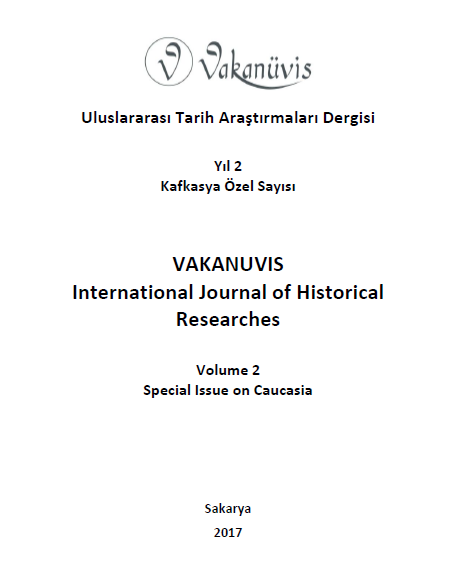Kafkasya’da Ruslaştırma Siyaseti (XIX. Yüzyıl ve XX. Yüzyıl Başları)
Russification Policy In Caucasus (XIXth and Early XXth Century)
Author(s): Mustafa TanrıverdiSubject(s): Political history, Politics and society, History of Education, 19th Century, Pre-WW I & WW I (1900 -1919)
Published by: Serkan YAZICI
Keywords: Russification; Caucasus; Russia; Russian; Armenian;
Summary/Abstract: The Russian Empire, which ruled over an area from the Caucasus to Central Asia, also hosted a significant portion of non-Slavic population throughout the nineteenth century. Looking for ways to keep this demography together, Russia aimed to get rid of differences in areas of religion and language by the end of the century. This attitude, which emerged from a growing Russian nationalism and political developments, is called "Rusifikatsiya" in Russian historiography. According to some Russian bureaucrats, the practices in this policy aimed at creating a civilized society. According to others, these policies were not a form of Russification but just an acculturation into Russian culture, i.e. Ruslation. Ruslation was carried out by those who wanted to show themselves with power, and connected themselves to the identity and ideology of the state. The Russification policy began to manifest itself as a reflection of the rise of Russian nationalism after the Crimean War. After the assassination of II. Aleksandr's in 1881, different identities within Russian borders began to be perceived as enemies. In the region with a multinational structure like the Caucasus, problems and reactions of the state led to significant developments. Reflections of the Russification policy in the field of religion and education resulted in the revolt of non-Russian actions. After the 1905 Revolution, Russia had to step back from the Russification policy.
Journal: Vakanüvis- Uluslararası Tarih Araştırmaları Dergisi
- Issue Year: 2/2017
- Issue No: Spec.issue
- Page Range: 538-557
- Page Count: 20
- Language: Turkish

